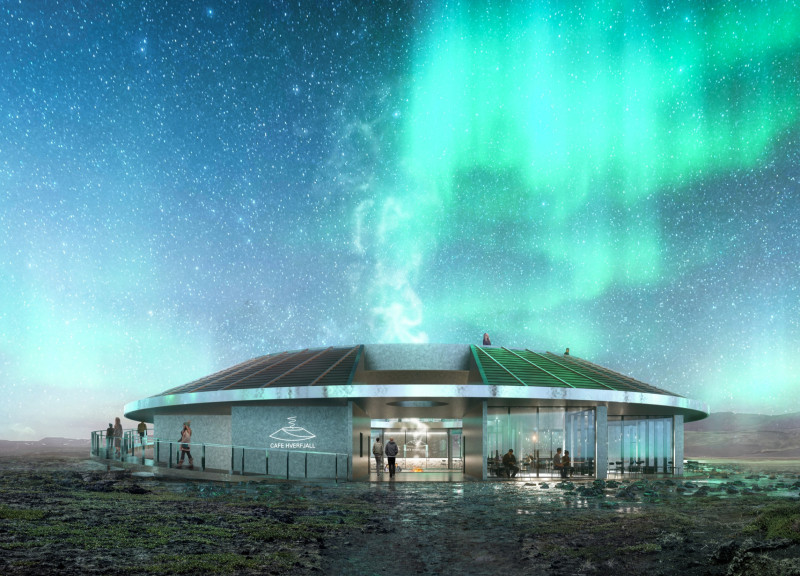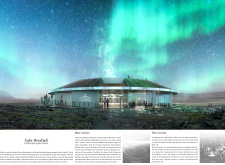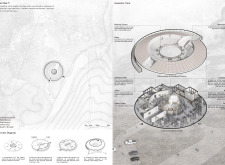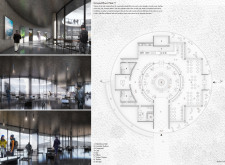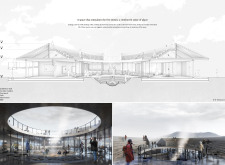5 key facts about this project
The overall design adopts a circular form that reflects the crater's shape, establishing a harmonious relationship between the structure and its setting. At its core, the project features a central courtyard that promotes flow and interaction among visitors. Key functional spaces include an exhibition hall, a cafe area with extensive views, and an observation deck that allows for panoramic vistas of the landscape. These components facilitate a comprehensive visitor experience by integrating leisure, culture, and nature.
Unique Design Approaches That Set the Project Apart
What distinguishes the "Cafe Hverfjall" project from typical cafes is its emphasis on experiential engagement and cultural integration. The design utilizes a combination of materials, including textured concrete, extensive glass, and warm timber, which enhance the sensory experience of the space. The glass walls are strategically placed to maximize natural light while framing scenic views, creating an airy and open atmosphere.
Sustainability remains a focal point; the inclusion of solar panels aligns the cafe with contemporary ecological practices. The architectural layout encourages exploration through its open and flowing spaces, inviting visitors to meander between the exhibition areas and the cafe. This design strategy promotes both social interaction and individual contemplation.
Detailed Architectural Features
The project incorporates various architectural features that contribute to its functionality and aesthetic. The ramp leading to the observation deck not only facilitates accessibility but also serves as a visual element that connects the interior and exterior spaces. The combination of simple massing with carefully considered spatial organization allows for a comprehensive visitor experience.
The interior spaces are characterized by a blend of utilitarian and inviting elements, with carefully chosen finishes and furnishings that evoke a sense of warmth. Spatial transitions create distinct atmospheres, allowing visitors to engage with different aspects of the space, from a lively cafe environment to quieter areas dedicated to contemplation and artistic displays.
For a deeper understanding of the architectural aspects and spatial organization within the project, readers are encouraged to explore the architectural plans, sections, designs, and innovative ideas that further illustrate the thought process behind "Cafe Hverfjall." This exploration will provide valuable insights into the project’s unique contributions to architecture in Iceland.


